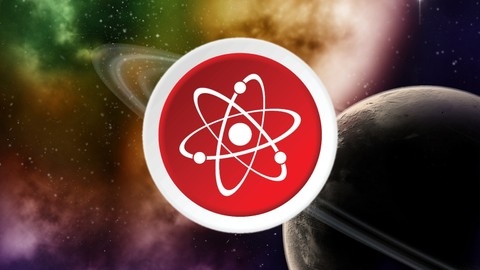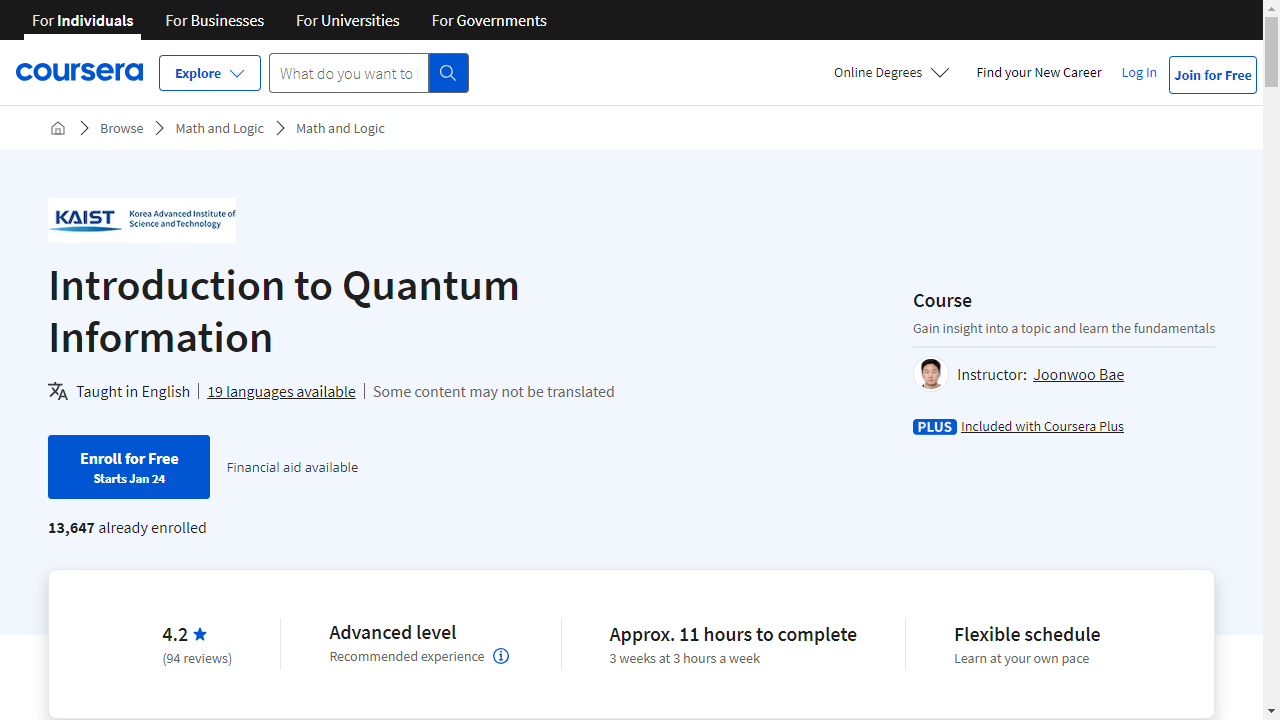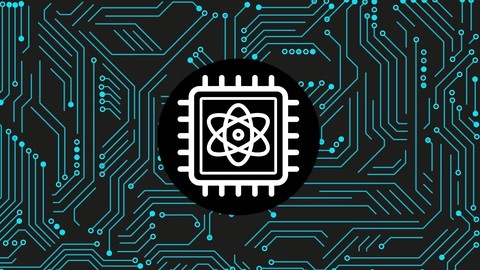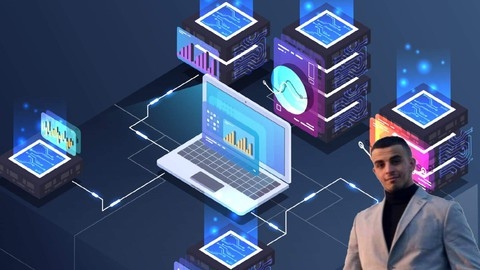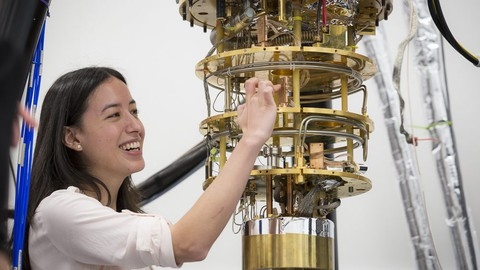Quantum computing is a revolutionary field that harnesses the principles of quantum mechanics to perform computations in ways that classical computers cannot.
By utilizing concepts like superposition and entanglement, quantum computers have the potential to solve complex problems that are currently intractable, revolutionizing fields like medicine, materials science, and artificial intelligence.
Learning quantum computing can equip you with the knowledge and skills to contribute to this cutting-edge field and be part of shaping the future of technology.
However, finding a comprehensive and engaging quantum computing course can be challenging, given the complexity of the subject and the rapidly evolving landscape.
You want a course that not only explains the theoretical foundations but also provides practical experience and hands-on opportunities to solidify your understanding.
Based on our analysis, QC101 Quantum Computing & Intro to Quantum Machine Learning on Udemy stands out as the best course overall.
This comprehensive course covers a wide range of topics, from the fundamentals of quantum mechanics to quantum algorithms and even quantum machine learning.
It also provides hands-on experience with quantum simulators and programming languages like Qiskit and Microsoft Q#, making it an ideal choice for both beginners and those with some prior knowledge.
While QC101 Quantum Computing & Intro to Quantum Machine Learning is our top pick, we understand that you might be looking for a course that focuses on specific aspects of quantum computing or caters to a particular learning style.
To help you find the perfect course for your needs, we have reviewed several other excellent options available.
QC101 Quantum Computing & Intro to Quantum Machine Learning
Provider: Udemy
This course starts by building a strong foundation in quantum physics, using photon polarization as a way to understand superposition and entanglement.
You then dive into the essential math behind quantum computing: complex numbers, probability, and linear algebra.
You learn about Boolean algebra, logic gates, and how these concepts apply to cryptography.
You then explore quantum cryptography, specifically the BB84 protocol, to learn how quantum mechanics enables secure communication.
The course then delves into the mathematical modeling of quantum physics, showing you how complex numbers, matrices, and probability describe quantum systems.
You will become familiar with spin states and their mathematical representation.
You then discover how quantum systems transform, both reversibly and irreversibly, and how measurements impact these systems.
You explore multi-qubit systems and the fascinating phenomenon of entanglement.
You get hands-on experience with quantum simulators to visualize superposition and entanglement in action.
You then transition to the quantum computing model, learning about quantum circuits and gates like CNOT and Toffoli gates.
You even get to write quantum programs using Microsoft Q# and experiment with IBM Quantum Experience, running your programs on real quantum computers.
The course also covers Qiskit, a Python library for quantum computing, where you implement algorithms like Shor’s algorithm and BB84 cryptography.
Finally, you enter the world of quantum machine learning.
You start with classical machine learning concepts – AI, model learning, classification, support vector machines, and KNN – to build a foundation for quantum approaches.
You then explore quantum machine learning algorithms like quantum KNN and quantum support vector machines, discovering how they leverage quantum computing to potentially revolutionize artificial intelligence and solve complex problems beyond the reach of classical computers.
Introduction to Quantum Information
Provider: Coursera
This course, offered by KAIST, starts you off with the basics of quantum mechanics.
You’ll explore quantum experiments, get to grips with the axioms of quantum theory, and understand how these principles govern quantum systems.
You’ll then dive into the world of qubits, the fundamental building blocks of quantum computers.
The course teaches you how to manipulate qubits and understand the relationship between state transformations and probabilities.
You’ll become familiar with qubit dynamics, explore the concept of mixed states, and learn to visualize qubit states using the Bloch sphere.
The course also covers quantum state discrimination, teaching you how to differentiate between different quantum states.
Next, you’ll delve into the fascinating phenomenon of entanglement, where two or more particles become interconnected regardless of distance.
You’ll learn about two-qubit entanglement, how to manipulate entangled qubits using two-qubit gates, and how to gain insights into their shared state through two-qubit measurements.
The course even delves into the amazing concept of quantum teleportation, where you can transfer a qubit’s state without physically moving the qubit itself.
You’ll then transition into the world of quantum computing.
You’ll encounter the Deutsch Problem, a classic example showcasing the superior efficiency of quantum algorithms over classical ones in solving specific problems.
The course will guide you through the Deutsch algorithm and its different implementations, along with the essential concept of phase estimation for determining the phase of a quantum state.
You’ll also explore quantum channels, learning how to represent them using Kraus operators and CPTP maps.
You’ll understand the unique characteristics that set quantum channels apart from their classical counterparts.
The course concludes by exploring the captivating realm of entanglement manipulation, where you’ll discover techniques for manipulating entangled states.
You’ll learn about multipartite entanglement, involving more than two entangled qubits, and how to work with entanglement in the more realistic scenario of mixed states.
The Complete Quantum Computing Course
Provider: Udemy
This course provides a comprehensive exploration of quantum computing, starting with the fundamentals.
You will build a strong foundation in the mathematical principles behind quantum computing, including complex numbers and linear transformations.
This sets the stage for understanding how quantum computers work differently compared to classical computers.
You will then delve into the fascinating world of qubits, exploring concepts like superposition and entanglement.
The course doesn’t just stop at theory; it equips you with practical coding skills using Python.
You will learn how to write functions, work with data structures, and master the art of error handling, essential for programming quantum algorithms.
The course then introduces you to Qiskit, a powerful Python library for quantum programming.
Using Qiskit, you will build your first quantum circuits and experience the thrill of running them on simulators and even real quantum computers provided by IBM.
You will explore groundbreaking quantum algorithms, such as Grover’s, Deutsch’s, and Shor’s, understanding their real-world applications.
Understanding Modern Physics II: Quantum Mechanics and Atoms
Provider: Coursera
This course takes you on a journey through the core ideas of quantum mechanics, starting with the perplexing question of whether light acts like a wave or a particle.
You’ll explore mind-bending concepts like the Photoelectric Effect and the Single Photon Double Slit Experiment, which reveal the strange reality of particle-wave duality.
Then, you’ll dive deeper into the quantum world with the Schrödinger equation, the key that unlocks the secrets of how quantum systems behave.
You’ll explore scenarios like the Potential Well and Tunneling, where particles can pass through barriers, something unheard of in classical physics.
The course then uncovers the mysteries of identical particles, introducing you to Bosons and Fermions, the building blocks of matter.
You’ll then explore the structure of atoms, understanding how their internal workings determine the properties of different elements in the Periodic Table.
You’ll learn about groundbreaking experiments like the Stern-Gerlach Experiment, revealing the fascinating property of spin, which forms the basis of quantum bits, or Qubits - the heart of quantum computers.
This course doesn’t shy away from complex ideas like the EPR Paradox and Bell Inequality, illustrating the bizarre, counter-intuitive nature of quantum mechanics.
You’ll even learn how to calculate the probability of finding a particle in a specific spin state, a crucial skill in quantum computing.
Introduction to Quantum Computing
Provider: Udemy
This “Introduction to Quantum Computing” course on Udemy starts you off by contrasting quantum computing with the regular computing you’re used to.
You’ll learn about the characteristics that make quantum computing unique and powerful, like superposition and entanglement.
You will then dive into the math behind quantum computing, including complex numbers and linear algebra.
Don’t worry, the instructor breaks down these concepts into smaller, manageable parts.
You’ll discover what a qubit is—the basic unit of information in quantum computing—and how it differs from classical bits.
With this foundation, you will then move on to explore quantum algorithms and how they solve problems that traditional computers find impossible.
You’ll encounter algorithms like Grover’s algorithm, used for searching databases, and Shor’s algorithm, used for factoring numbers.
Understanding these algorithms will give you a practical understanding of how quantum computing can be applied.
Finally, you will get hands-on experience with Microsoft Q#, a programming language specifically designed for quantum computing.
You will learn how to set up your programming environment and start coding.
The course walks you through basic Microsoft Q# operations, teaching you the fundamentals of writing your own quantum programs.
Beginners guide: Practical Quantum Computing with IBM Qiskit
Provider: Udemy
This course guides you through the complex world of quantum computing, starting with the basics of quantum mechanics.
You’ll learn about intriguing concepts like superposition and entanglement, the foundation of how quantum computers work.
You’ll then dive into the practical side, comparing classical bits to quantum qubits and discovering how to create, maintain, and read them.
You’ll explore how quantum states are represented using vectors and matrices, crucial for understanding quantum algorithms.
The course introduces you to essential logic gates - the building blocks of quantum circuits - like Pauli X, Y, and Z, and the Hadamard gate.
The course emphasizes hands-on learning using IBM Qiskit, a popular framework for quantum computing.
You’ll gain practical experience building and running quantum circuits on both simulators and real IBM quantum computers.
You’ll explore multi-qubit systems and learn to design complex circuits with gates like CNOT, CZ, and SWAP, leading you to understand powerful algorithms like the Deutsch-Jozsa algorithm.
The course also delves into the fascinating world of quantum cryptography, covering concepts like quantum key distribution and its relationship to traditional encryption methods like RSA.
You’ll even explore quantum teleportation, a mind-boggling phenomenon that allows information transfer through the quirks of quantum mechanics.
Also check our posts on:
